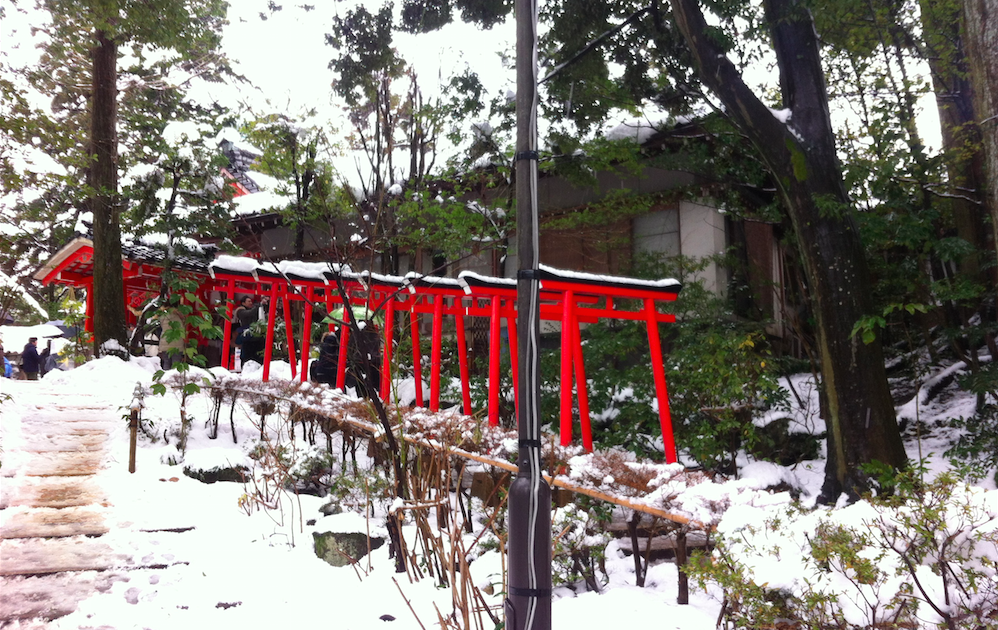New Year’s in Kanazawa
It was winter break; I was sitting with my knees pulled up to my chest in a cramped bedroom in the heart of Tokyo. With New Year’s just around the corner and my family far, far away, a nostalgic yearning was starting to set in. That was when I decided to book my night-bus ticket to Kanazawa.
Kanazawa is, in many ways, a relic of the past. During the Edo period, Kanazawa was a wealthy and bustling city — a jewel in the massive domain controlled by the Maeda, a formidable samurai clan. Due to its relatively peaceful history (and thus lack of bombings), today it stands largely as it has in the past — samurai mansions roughly shoving at newer apartment buildings, the narrow streets crisscrossing the landscape bringing to mind an era when horses and carriages, rather than cars, were the main means of transportation.
I made my first acquaintance with the city a year and a half ago, in the summer of 2013, as a student of a language-study program known as Princeton in Ishikawa. That had also been my very first trip to Japan itself. The next summer, I returned as an intern, writing articles for a regional newspaper headquartered at Kanazawa. Thus, for me too, Kanazawa brings back precious memories.
On the second of January, at five in the morning, I stumbled off the bus, wincing as I worked out the cricks in my neck. I was so caught up in the sorry state of my muscles that I almost didn’t notice the huge white mounds slumbering around me.
It was snowing.
I looked incredulously and them, and then at my friend, and then down at my coat, which was barely enough to brave a winter day in Los Angeles, much less subzero-winter-wonderland Kanazawa. That was why I spent the majority of that first day shopping to survive — which, may I add, is actually a common thing to do after New Year’s. Rather, the second in Japan is much like Black Friday in America, with massive sales, matched only by equally massive chaos. (In post-New-Year’s-Harajuku — a popular fashion district in Tokyo — only the law of the jungle prevails, I hear.
That night, though, I did something a little more cultural, known as初詣 (hatsumōde). Hatsumōde is a traditional visit to a shrine or a temple, done at the beginning of a new year. Holding my umbrella up as a shield against the snow, I fought my way up the steps of Oyama Shrine, towards the hall of worship, where by ringing a bell and tossing a 5-yen coin into a depository, I called upon the protecting kami (god) of the shrine and asked for a blessing. Then, I made my way back to the greater grounds and bought an omikuji, a slip of paper onto which is written your fortune for the upcoming year. It predicts everything, from health, to the recovery of lost items, to the possible appearance of “your destined one.”
I eyed the little white rectangle in my hand, sealed with good, old-fashioned glue, with quizzical amusement. Though I don’t know how much I actually believe in this sort of stuff, I treat it as a sort of lucky charm, something to grasp in moments of hardship, to gain comfort and courage from. And, starting a new year in a foreign country, separated by a vast and depthless ocean from the warmth of family and home, goodness knows how much I needed such a charm.
I broke open the seal.
“Great Fortune,” it read. “Your Wish: Though things may not go as planned at first, in the end, everything will be well. Your Awaited One: It will take a while, but they will surely come.”
I snorted quietly to myself and scanned further down. “Your Studies: Don’t worry and work hard. Your Health: Don’t fret and believe in the gods.”
The white snow continued to patter softly onto the ground, nestling in soft white patches among the eaves of the shrine. I smiled and slipped the paper into the purse.
It looks like I’m in for a great year.

